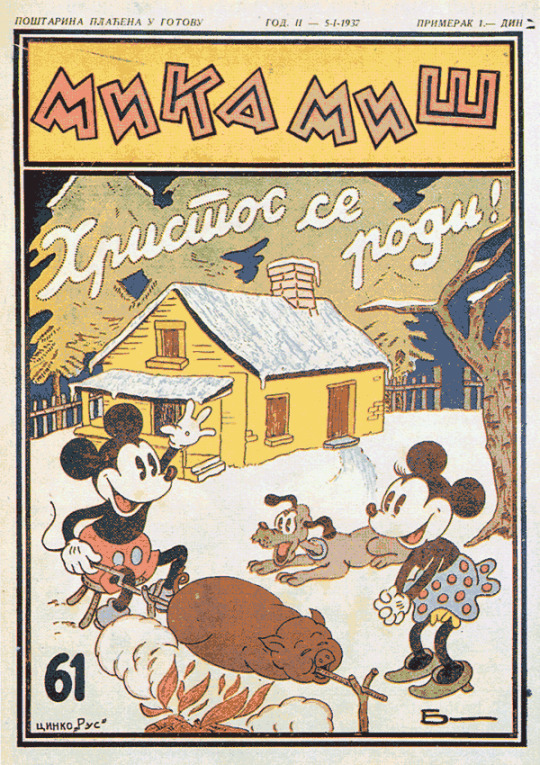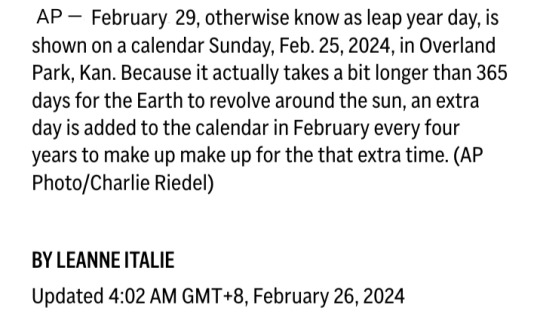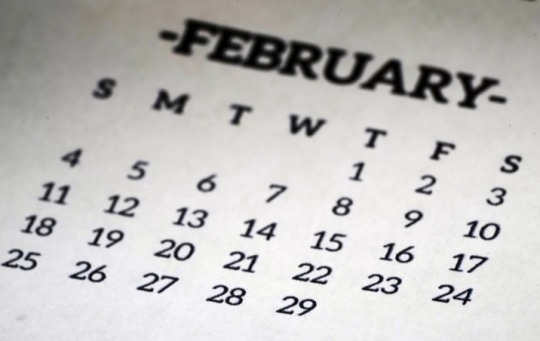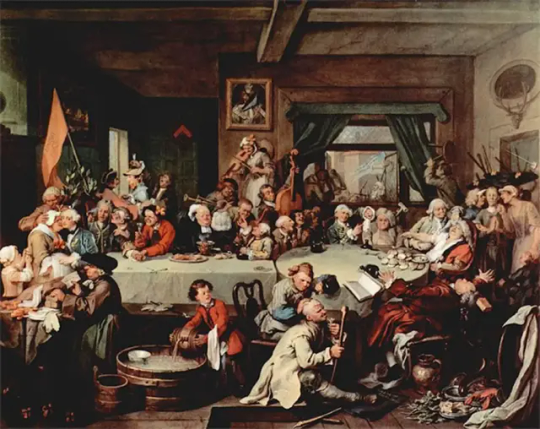#julian calendar
Text
Alien: So your calendar was created by this guy Caesar in...
Human: Rome.
Alien: And later updated to its current form by this guy Gregory in...
Human: Also Rome.
Alien: And your international date line passes opposite...
Human: Greenwich, England.
Alien: Why?
Human: Well, they used to have a really good clock...
823 notes
·
View notes
Text
We’re worried about the WRONG FUCKING DAY the ides of March Caesar got tossed on followed the Julian calendar and we’re in the Gregorian one now. We really should beware the 26th of March (New Style)
#rubia speaks#julius caesar#ides of march#gregorian calendar#julian calendar#tossed bc he’s. he’s a salad..
134 notes
·
View notes
Text
2024 March 30

Medieval Astronomy from Melk Abbey
Image Credit: Paul Beck (Univ. Vienna), Georg Zotti (Vienna Inst. Arch. Science)
Copyright: Library of Melk Abbey, Frag. 229
Explanation: Discovered by accident, this manuscript page provides graphical insight to astronomy in medieval times, before the Renaissance and the influence of Nicolaus Copernicus, Tycho de Brahe, Johannes Kepler, and Galileo. The intriguing page is from lecture notes on astronomy compiled by the monk Magister Wolfgang de Styria before the year 1490. The top panels clearly illustrate the necessary geometry for a lunar (left) and solar eclipse in the Earth-centered Ptolemaic system. At lower left is a diagram of the Ptolemaic view of the Solar System with text at the upper right to explain the movement of the planets according to Ptolemy's geocentric model. At the lower right is a chart to calculate the date of Easter Sunday in the Julian calendar. The illustrated manuscript page was found at historic Melk Abbey in Austria.
#astronaut#astronomers#not astrology#star#stars#art#astronomy#outer space#space#artist#Renaissance#medieval#astrophysics#1490#nicolaus copernicus#tycho brahe#johannes kepler#galileo#Magister wolfgang#solar system#easter sunday#julian calendar#melk abbey#austria
32 notes
·
View notes
Note
for some reason many people celebrate bread day on april 7 because they believe it's the gregorian version of the julian date of april 19 when it's literally not!! that's not how you convert it! (if you want the gregorian version of the julian april 19, it's may 2)
Did you come into my inbox purely to start drama in the calendar fandom over Bread Day? Because if so, I approve.
I have no idea if this message is correct, but am posting it in case anyone whose brain does not blow a fuse trying to calculate dates (like mine does) wants to gleefully infodump/argue about this.
21 notes
·
View notes
Text

Srećno Badnje veče i Božić
© Dragana Dimitrijević
11 notes
·
View notes
Text

March 25 was celebrated as the traditional date of the Scottish New Year until 1599.
In that year, Scotland converted to the modern Gregorian Calendar. England did not adopt the new calendar until the Calendar Act of 1751 was passed, a full 152 years after Scotland.
Traditionally in Scotland the marking of the New Year was of greater significance than Christmas. Scots had long celebrated old rites at this time and, besides, the Calvinist church after 1560 took a dim view of the Catholic practices celebrated at Christmas and so discouraged those. Until 1599 the New Year began on 25 March but King James VI changed this to 1 January from 1600 onwards.
You can find a full explanation of this here https://www.nrscotland.gov.uk/.../old.../change-in-calendar
50 notes
·
View notes
Text

Cover from the Mickey Mouse comic strip in Serbian from 1937. To all who celebrate according to the Julian calendar, I wish you a Merry Christmas!
Yes, since the Julian calendar is 14 days late, January 7th is Christmas for those Christian believers, especially for the Orthodox, while for others it is December 25th. Merry Christmas everyone! Mir Božiji, Hristos se rodi! Vaistinu se rodi! Мир Божији, Христос се роди! Ваистину се роди! С Рождеством!
#mickey mouse#miki miš#minnie mouse#pluto the dog#christmas#merry christmas#julian calendar#topolino#mouseverse#pluto#happy new year#holidays#roasting a pig#sorry pig#1937#disney mouse comics#disney comics#comics#disney mice#disney mouseverse#disney dog#winter#mickey x minnie#otp#love couple#1930s#golden age of comics#european comics#serbian comics#serbian
41 notes
·
View notes
Text



NEW YORK (AP) — Leap year. It’s a delight for the calendar and math nerds among us.
So how did it all begin and why?
Have a look at some of the numbers, history and lore behind the (not quite) every four year phenom that adds a 29th day to February.
BY THE NUMBERS
The math is mind-boggling in a layperson sort of way and down to fractions of days and minutes.
There’s even a leap second occasionally, but there’s no hullabaloo when that happens.
The thing to know is that leap year exists, in large part, to keep the months in sync with annual events, including equinoxes and solstices, according to the Jet Propulsion Laboratory at the California Institute of Technology.
It’s a correction to counter the fact that Earth’s orbit isn’t precisely 365 days a year.
The trip takes about six hours longer than that, NASA says.
Contrary to what some might believe, however, not every four years is a leaper.
Adding a leap day every four years would make the calendar longer by more than 44 minutes, according to the National Air & Space Museum.
Later, on a calendar yet to come (we’ll get to it), it was decreed that years divisible by 100 not follow the four-year leap day rule unless they are also divisible by 400, the JPL notes.
In the past 500 years, there was no leap day in 1700, 1800 and 1900, but 2000 had one.
In the next 500 years, if the practice is followed, there will be no leap day in 2100, 2200, 2300 and 2500.
The next leap years are 2028, 2032, and 2036.
WHAT WOULD HAPPEN WITHOUT A LEAP DAY?
Eventually, nothing good in terms of when major events fall, when farmers plant and how seasons align with the sun and the moon.
“Without the leap years, after a few hundred years we will have summer in November,” said Younas Khan, a physics instructor at the University of Alabama at Birmingham.
“Christmas will be in summer. There will be no snow. There will be no feeling of Christmas.”


WHO CAME UP WITH LEAP YEAR?
The short answer: It evolved.
Ancient civilizations used the cosmos to plan their lives, and there are calendars dating back to the Bronze Age.
They were based on either the phases of the moon or the sun, as various calendars are today. Usually they were “lunisolar,” using both.
Now hop on over to the Roman Empire and Julius Caesar.
He was dealing with major seasonal drift on calendars used in his neck of the woods. They dealt badly with drift by adding months.
He was also navigating a vast array of calendars starting in a vast array of ways in the vast Roman Empire.
He introduced his Julian calendar in 46 BCE.
It was purely solar and counted a year at 365.25 days, so once every four years an extra day was added.
Before that, the Romans counted a year at 355 days, at least for a time.
But still, under Julius, there was drift. There were too many leap years.
"The solar year isn’t precisely 365.25 days. It’s 365.242 days," said Nick Eakes, an astronomy educator at the Morehead Planetarium and Science Center at the University of North Carolina in Chapel Hill.
Thomas Palaima, a classics professor at the University of Texas at Austin, said adding periods of time to a year to reflect variations in the lunar and solar cycles was done by the ancients.
The Athenian calendar, he said, was used in the fourth, fifth and sixth centuries with 12 lunar months.
That didn’t work for seasonal religious rites. The drift problem led to “intercalating” an extra month periodically to realign with lunar and solar cycles, Palaima said.
The Julian calendar was 0.0078 days (11 minutes and 14 seconds) longer than the tropical year, so errors in timekeeping still gradually accumulated, according to NASA. But stability increased, Palaima said.
The Julian calendar was the model used by the Western world for hundreds of years.
Enter Pope Gregory XIII, who calibrated further. His Gregorian calendar took effect in the late 16th century.
It remains in use today and, clearly, isn’t perfect or there would be no need for leap year. But it was a big improvement, reducing drift to mere seconds.
Why did he step in? Well, Easter.
It was coming later in the year over time, and he fretted that events related to Easter like the Pentecost might bump up against pagan festivals.
The pope wanted Easter to remain in the spring.
He eliminated some extra days accumulated on the Julian calendar and tweaked the rules on leap day.
It’s Pope Gregory and his advisers who came up with the really gnarly math on when there should or shouldn’t be a leap year.
“If the solar year was a perfect 365.25 then we wouldn’t have to worry about the tricky math involved,” Eakes said.
WHAT’S THE DEAL WITH LEAP YEAR AND MARRIAGE?
Bizarrely, leap day comes with lore about women popping the marriage question to men.
It was mostly benign fun, but it came with a bite that reinforced gender roles.
There’s distant European folklore.
"One story places the idea of women proposing in fifth-century Ireland, with St. Bridget appealing to St. Patrick to offer women the chance to ask men to marry them," according to historian Katherine Parkin in a 2012 paper in the Journal of Family History.
Nobody really knows where it all began.
In 1904, syndicated columnist Elizabeth Meriwether Gilmer, aka Dorothy Dix, summed up the tradition this way:
“Of course people will say ... that a woman’s leap year prerogative, like most of her liberties, is merely a glittering mockery.”
The pre-Sadie Hawkins tradition, however serious or tongue-in-cheek, could have empowered women but merely perpetuated stereotypes.
The proposals were to happen via postcard, but many such cards turned the tables and poked fun at women instead.
Advertising perpetuated the leap year marriage game. A 1916 ad by the American Industrial Bank and Trust Co. read thusly:
“This being Leap Year day, we suggest to every girl that she propose to her father to open a savings account in her name in our own bank.”
There was no breath of independence for women due to leap day.
SHOULD WE PITY THE LEAPLINGS?
Being born in a leap year on a leap day certainly is a talking point. But it can be kind of a pain from a paperwork perspective.
Some governments and others requiring forms to be filled out and birthdays to be stated stepped in to declare what date was used by leaplings for such things as drivers licenses, whether February 28 or March 1.
Technology has made it far easier for leap babies to jot down their February 29 milestones, though there can be glitches in terms of health systems, insurance policies, and with other businesses and organization that don’t have that date built in.
There are about 5 million people worldwide who share the leap birthday out of about 8 billion people on the planet.
Shelley Dean, 23, in Seattle, Washington, chooses a rosy attitude about being a leapling.
Growing up, she had normal birthday parties each year, but an extra special one when leap years rolled around.
Since, as an adult, she marks that non-leap period between February 28 and March 1 with a low-key “whew.”
This year is different.
“It will be the first birthday that I’m going to celebrate with my family in eight years, which is super exciting, because the last leap day I was on the other side of the country in New York for college,” she said. “It’s a very big year.”

#Leap Year#calendar#equinoxes#solstices#Jet Propulsion Laboratory#California Institute of Technology#NASA#National Air & Space Museum#Julius Caesar#julian calendar#Pope Gregory XIII#gregorian calendar#Elizabeth Meriwether Gilmer#Dorothy Dix#leaplings
3 notes
·
View notes
Text
As far as I'm concerned, today is Christmas.
Srećan Božić iz Srbije!

#I'm not religious but the calendar distinctions mean a lot to me for diasporic reasons#personal#holidays#christian orthodoxy#julian calendar#christmas#bozic
31 notes
·
View notes
Text
The Year Of Confusion
So, in 46 BC, Julius Caesar (yes, that one) decided he was going to reform the calendar Rome was using and set up a new calendar. With some slight adjustments along the way, that "new" calendar is the one we are still using now.
To make the transition from the old calendar to the new calendar, Caesar declared that 46BC, the year prior to the kickoff, would just keep lasting until January 1, 45 BC.
46 BC was a year lasting 445 days. Two throwaway "months" were tacked in between November and December for a 67 day stall. This year came to be called "The Year Of Confusion."
January 1, 45 BC was the start of the Julian calendar. And on March 15, 44 BC, only slightly over a year later, Julius Caesar was assassinated in the middle of the Roman senate by his own senators.

To my knowledge, none of Caesar's killers mentioned the calendar in their apologetics for their actions (though if anybody did, please tell me). However, I bet that damn Year of Confusion was on people's minds, even if they didn't say it out loud.

35 notes
·
View notes
Text



On April 19th, I made bread.
2 notes
·
View notes
Note
7 and 10 for the ask game
7) do you prefer Julian, Gregorian or astronomical dates?
Depends! Certain Julian dates align better with our seasonal cycles. Old Michaelmas, for example, is around the time the farmers harvests end here. Christmas, Good Friday, walpurisnatch Easter are on Gregorian time. My May celebrations coincide with the heliacal setting of the Pleiades.
Other holy days I use a combination. My St bride’s day celebrations start the first and end at the exact midway point.
there’s no ten friend 😂💕
#traditional witchcraft#holy days#julian calendar#Gregorian calendar#brightgnosis#dual faith#syncretism#folk catholic
3 notes
·
View notes
Text

Roman Calendar (Fasti Vallenses) - ISAW
"Even after the days of the month had lost any fixed correspondence with the phases of the moon, the Romans continued to count them in relation to one of three fixed points in the lunar cycle. The Kalends (from calare, "proclaim") was the first day of the month ... at the first appearance of the crescent new moon... The Nones (from nonus, "ninth") coincided with the first quarter of the moon and was the ninth day (counting inclusively) before the Ides (from iduare "to divide"), which occurred at the full moon and came in the middle of the month." - The Julian Calendar
#julian calendar#ancient history#ancient rome#calendar#kalends#lunar calendar#moon phases#solar calendar#sun path#seasons
3 notes
·
View notes
Text

Рождественский сочельник/эстетика
#christmas eve#aesthetic#christmas vibes#christmas in russia#winter#snow#moodboard#candles#lights#christmas tree#winter night#church#traditions#cosiness#long winter holidays#julian calendar
3 notes
·
View notes
Text
#OTD in 1752 – The Gregorian calendar is adopted in Ireland and Britain, 170 years after mainland Europe | 2 September is followed by 14 September.
‘Give us our eleven days!’ The riots of 1752.
The eleven days referred to here are the ‘lost’ 11 days of September 1752, skipped when Britain and Ireland changed over from the Julian calendar to the Gregorian calendar, synchronising us with the most of Europe.
The Gregorian calendar is today’s international calendar, named after Pope Gregory XIII in February 1582.
Before 1752, Britain, Ireland…

View On WordPress
5 notes
·
View notes
